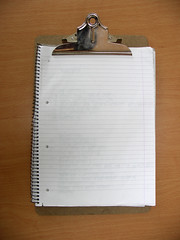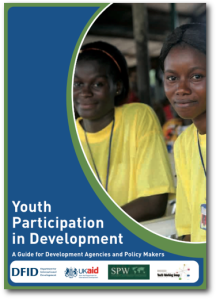[Summary: Documenting the card generators from ‘The Bump Game’ built at Rewired State DotGovLabs]

Update 21/03/10: More details on the project and background now on the Rewired State site.
I often write about youth engagement. My wife, Rachel, works with older people. But the last two days I’ve been part of a team at Rewired State DotGovLabs exploring how digital technologies and local data could be useful for those at a different stage of life, parents-to-be and their babies. This is a brain & link-dump of the two days work.
Rewired State DotGovLabs was a two-day hack-event in which developers and designers started day one with presentations from the teams behind UK Government ‘super sites’ NHS Choices, Directgov and Businesslink, and were then invited to come up with ideas for projects that helped those sites meet some key challenges, or which drew upon data available through those sites. The group I worked with chose to focus on information and data around pregnancy, creating a paper and web-based game (working title ‘The Bump Game’) which provides an engaging way for a mother-to-be and her partner/birth-partner to explore key issues that will arise over the nine months of the pregnancy.
The web-based version of the game should be available at TheBumpGame.com in the near future, but I spent most of my time working on a generator for printable game cards. You can find the final version, as of the end of Saturday, available here.
How does it work
There are two sorts of cards created by the generator.

Game Cards
The cards are created from demonstration questions that were entered into a Google Spreadsheet directly and using Google Forms. The questions are based on content from NHS Choices, particularly a list of content which another team at Rewired State had categorised and meta-data tagged for it’s relevancy to different stages of pregnancy.
The spreadsheet is then pulled into the card generator as a CSV file (Google Spreadsheets can be published to the web as CSV) and a php script works through each question and creates cards.
To add images, we make use of the code developed by Ben Webb for Plings which allows us to tag Creative Commons images on Flickr that will appear in random order on the cards according to the trimester of pregnancy that the question cards relate to.
If a link is provided to back up the information in the question, then we use the bit.ly API to generate a short version of the URL (although members of the team noted that http://nhs.uk is as short as http://bit.ly and an NHS URL Shortener would certainly be a quick-win development for someone to implement). We then include on the card an image tag pointing to the very handy Kawya QR Code generator which means that anyone with a QR Code reader on their phone can simply point the camera of the phone at the square barcode you see on the Answer side of the cards and can get taken direct to extra information.
The game cards are then output with some styling created by Josh and Ivo with the question and answer next to each other, meaning that when printed, you can just cut the page horizontally and fold it to get instant cards.
Unfortunately, most browsers don’t print background images and so-forth used in the cards, and we can’t guarantee how things will format. But, fortunately, another web-service came to the rescue, and right now the ‘Save Page as PDF‘ service from PDFOnline seems to generate two question/answers to a page for easy printing when we point it at the game cards. For example, click here to get it to generate cards for you.
We also wanted the game to have a localisation element to it (imagine GPs or Health Visitors giving a customised local game to newly pregnant women). Some of the questions are set up then to draw upon the NHS Choices API to localise questions and answers to particular postcodes.
To see that in action, press ‘Options and Details’ at the top of the card generator and enter your own postcode, then take a look again at the nearest GP question card.
Local Service Cards
 I also made use of the NHS Choices API to allow the tool to generate other card-sets based on local postcodes. So, from ‘Options and Details’ you can generate a set of 10 cards each for nearest GPs, Hospitals, Stop Smoking Services, Parent and Child Services, Alcohol Services and Mental Health Services for any postcode (select type of card first and then enter your postcode).
I also made use of the NHS Choices API to allow the tool to generate other card-sets based on local postcodes. So, from ‘Options and Details’ you can generate a set of 10 cards each for nearest GPs, Hospitals, Stop Smoking Services, Parent and Child Services, Alcohol Services and Mental Health Services for any postcode (select type of card first and then enter your postcode).
The cards make use of the Google Static Maps API to print a map of the location of the service on the card, along with QR Codes that take users to details of the service on NHS Choices. The cards also display a count of comments that have been left on the service in question on NHS Choices, although right now only a count of comments is available in the NHS Choices API – meaning giving any further details isn’t easy without scraping the data.
Again, these cards can be printed through the Save Page as PDF service for easy printing.
Playing the Game
The draft rules of the game itself are available here – and as soon as a copy of the game board is available online I’ll put a link to that.
Next steps
I’m not sure where this project goes next – but I’ll update this post when I hear more from other members of the team about future ideas for the project.
I’m most interested in the web->printed cards aspect of the code, and will see what I can do to (a) open that code up (b) improve it and make it more general for creating cards on all sorts of services.
My own learning about the process of how a hack-day happens will also feed into the Open Data Impacts project I’m currently undertaking for dissertation research.
 If you’ve looked at any sites such as Data.gov.uk or the London Datastore website, where you can browse and access datasets recently released by government, then I need your help.
If you’ve looked at any sites such as Data.gov.uk or the London Datastore website, where you can browse and access datasets recently released by government, then I need your help.
 I’ve been dealing with quite a few local authority finance departments over the last few weeks as bookings have been coming in for the
I’ve been dealing with quite a few local authority finance departments over the last few weeks as bookings have been coming in for the 



 I also made use of the NHS Choices API to allow the tool to generate other card-sets based on local postcodes. So, from ‘Options and Details’ you can generate a set of 10 cards each for nearest GPs, Hospitals, Stop Smoking Services, Parent and Child Services, Alcohol Services and Mental Health Services for any postcode (select type of card first and then enter your postcode).
I also made use of the NHS Choices API to allow the tool to generate other card-sets based on local postcodes. So, from ‘Options and Details’ you can generate a set of 10 cards each for nearest GPs, Hospitals, Stop Smoking Services, Parent and Child Services, Alcohol Services and Mental Health Services for any postcode (select type of card first and then enter your postcode).
